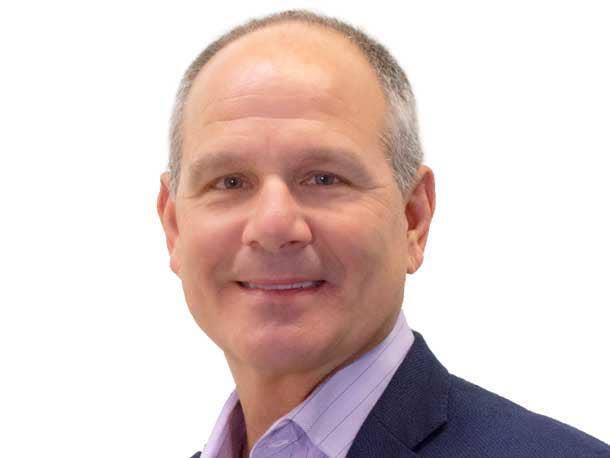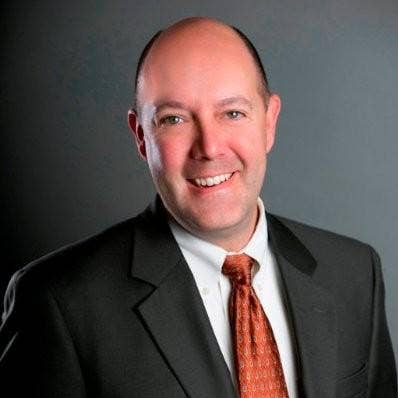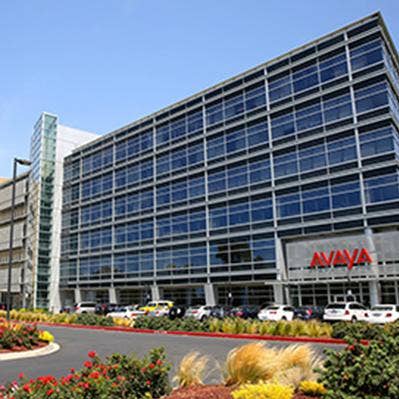Avaya CEO, Channel Chief On Hybrid Cloud Opportunities And The Next Chapter With Partners
Avaya CEO Alan Masarek and Channel Chief John Lindsley share the company’s aggressive growth strategy, which involves partners helping Avaya’s massive install base migrate to hybrid cloud products at their own pace and the channel program updates that partners can expect as the company moves past its recent financial struggles.

Avaya’s new CEO Alan Masarek
No Disruption Necessary `
Avaya’s new leaders have a message for partners: The company is ready to turn the page on its recent fiscal struggles and take back its leadership position in the business communications and collaboration space through a hybrid cloud strategy – something that the unified communications (UC) giant is “uniquely qualified” to deliver to customers all over the globe.
Avaya’s new CEO Alan Masarek and Vice President of North America Channels John Lindsley last week met with the company’s partner community council to talk direction and strategy for Avaya. Partners were armed with questions following a change in leadership, a substantial earnings miss, and cost-cutting measures, which resulted in a round of layoffs for Avaya this summer. But they were also enthusiastic for the future as the two executives shared the company’s new key tenants -- building the predominantly cloud products that customers want to buy partners want to sell. That will entail a combination of Avaya’s newer UCaaS and contact center as-a-service (CCaaS) offerings to the cloud-forward customers, as well as its flagship premises-based UC solutions for those customers that require control, with a layer of cloud over the top for omnichannel, contact center functionality.
Durham, N.C.-based Avaya is focused on returning to innovation and tapping into its massive base of enterprise customers to move them to a hybrid cloud model. The company doesn’t see itself in the same category as the pure play cloud UC providers who can’t accommodate premise-based needs or customers on a slower cloud migration journey. Instead, Avaya is bringing cloud functionality over the top of premise-based infrastructure to offer “innovation without disruption,” a strategy that is resonating with the company’s massive install base of global enterprise customers, the executives said.
Masarek and Lindsley sat down with CRN following the partner community council to share its new channel strategy, the focus on working alongside partners and what the channel can expect. What follows are excerpts from the conversation.

Avaya Channel Chief John Lindsley
What concerns and questions are top of mind for Avaya partners right now?
Lindsley: The biggest concern that I’ve heard [is that] partners just really want more information and more roadmap strategy around Allen [Masarek’s] key tenants he laid out for us, which was just that forward-looking strategy. That forward-looking roadmap of returning to innovation, returning to market leadership and really driving, and helping partners to succeed in the market building products that customers want to buy partners want to sell, having clear direction and understanding from Avaya as to where we’re going in that space. So, we got a lot of that done [at the partner community council]. We’ve got a lot more to come. It’s a work in progress, if you will, but that’s probably the number one item on partner’s minds -- just that technological roadmap.
Masarek: [Partners] want us to provide the innovative, predominantly cloud-based products that they need today and drive them forward. The theme is innovation without disruption, which is our customers -- via our partners -- are on a cloud journey. People are on different, very individualized cloud journeys. We have so many super large customers, or governmental customers or customers in areas of the globe, where the cloud may make less sense to them today. But nonetheless, customers want innovation, and that innovation is coming over the top -- typically on the cloud -- and they don’t want to have the disruption underneath. So, innovation without disruption. A perfect example is a customer that has an existing premise-architected UC and [contact center] CC solution, voice-only, that they’ve had for a long time and it’s completely bulletproof. They don’t want to rip it out. They don’t want to have that disruption. But they may want over the top functionality because they want to go from voice-only to omnichannel. We provide that via cloud. That’s the level of innovation that we can uniquely provide. But we don’t disrupt -- we don’t rip and replace. The beauty is, no one wants to go through that loss of the rip and replace. We can uniquely provide what competitors can’t. A competing [solution], by definition, is a complete rip and replace. Ours is not. It’s innovation without disruption and that really resonates with customers and partners.

Avaya posted a revenue miss for the last two quarters, a round of cost-cutting and layoffs, and brought in new leadership – all of which have been on partners’ minds. What do you want partners to know right now?
Masarek: The message I heard from partners [at the partner community council] was very encouraging relative to customer concern with the financial news. I was actually encouraged by that. And so, our message to them is that we need to get through this short period of time -- which I refer to as sort of this period of financial upset -- and turn the page. Basically, when we file our year-end materials, our 10-K at the end of November, we will turn the page on this financial upset and then will be able to move forward fully. We’re already moving forward as hard as we can in terms of product roadmap, cultural revitalization of the company, organizational clarity and deciding which products we’re going to rationalize and which we’re going to put more focus on, etc. And we have to kind of manage through this period of upset and everyone’s looking forward to the opportunity here in a couple months to turn the page.
Lindsley: I would add to partners: Avaya has got a solid plan. We are working that plan aggressively [and] partners are in this with us. We need our partners, and they’re cheering for us. We need partners alongside us to write this next great chapter.

What’s Avaya’s product strategy for helping partners move legacy customers into the cloud?
Masarek: The message we want to make clear to partners is: You want to sell the portfolio. You’ve got very well-established products [like] IP Office for midmarket, Aura in [contact center] CC, where you’re selling those to certain segments where that premise architecture is exactly what is needed. So, think of government, SLED, [customers in] rural area and certain geographies and certain verticals like healthcare where they might need premise-based control. We want to sell that to where it works. Concurrently, [the message] is to sell the cloud products, like our public CCaaS solution and on the UC side [and] our Avaya Cloud Office [ACO] solution. On the public CCaaS side, what you’re doing is you’re selling to the installed base initially, because it goes back to the innovation without disruption. They want feature functionality that is only delivered over the cloud. And that’s a perfect example -- think about the digital channels, omnichannel. But they don’t want to rip out the voice underneath that’s been working so well and is battle-tested. So, you’ve got to sell both. It should be from a customer-in perspective [and] what works for the customer. [For some] segments, geographies, certain industries -- premise is exactly what they need. And the beauty of it is that a lot of pure cloud vendors are not going to play there. So, we’ve got a very attractive competitive position there. And by the same token, as we bring cloud functionality to some of those over the top, avoiding the disruption, it’s also something that competitors cannot play in. So, those are two big, big areas of focus. And then we’re going after net new with our public Avaya Cloud Office on the UC side and public CaaS offering on the contact center side.
Again, it’s what the customers want. Kind of start with the bookends -- some customers need to be prem[ise]. Some are going to jump right into public cloud. The vast majority is in the middle, quite frankly, particularly among the large customer segment where it’s some version of hybrid. The partners are all over that with us because it’s music to the customer’s ears to not have to disrupt underneath and for the partner to be selling the added functionality that gets delivered over the top. The beauty about working with partners is they’re closer to the customer. Remember, we cover 90,000 customers across 190 countries. We have every potential flavor of customer size, industry, [and] geography that you can imagine. Their view of their hybrid journey is pretty personal for their own circumstances. We now have a solution for them [and can] move at their pace.

How is the new leadership changing Avaya’s channel program and what are the resources that partners can expect?
Lindsley: [Earlier this year] there were two disparate channel teams. One was specifically focused on one segment of the business, and one was focused on another. In the beginning in July, we began to integrate those teams into one [program] representing all partner types and certainly all platforms within the company.
As we continue our transformation and set our sights on fiscal 2023, we are recasting those resources around our top producing and certainly highest potential partners, to where our partners across the board, really, are going to have an enhanced channel model. For the biggest and the most strategic partners, there’s going to be a deeper level of channel resource. For 100 or so of our main partners, they will have a much larger slice of channel capacity that’s much closer to where they’re geographically. We’re going to put our [project managers] closer to where our partners reside. And even for the big middle, if you will, of our partner community, we’re going to be working more closely with our distributors to enhance our channel coverage for our Emerald partner community as well. So, the teams have come together. We’ve re-casted around the highest, most strategic and highest potential [partners], but everyone is going to be seeing an enhanced coverage model as we look towards fiscal 2023.

What are your goals for your first year as Avaya’s North Americas channel chief?
Lindsley: My goals are around broader engagement and broader protection, and migration and modernization of the installed base, driving partner participation and engagement, acquiring net new logos and winning our unfair share. I haven’t translated that yet into numerical specifics, but I definitely want and expect our partners to maintain a centerstage role in helping write this next chapter together with us and our shared customers.